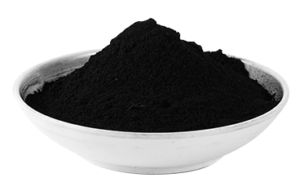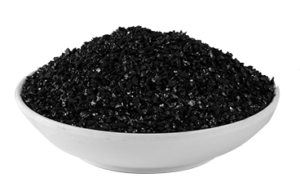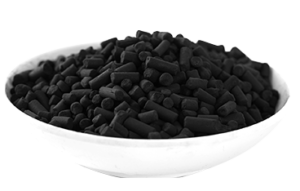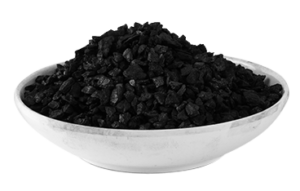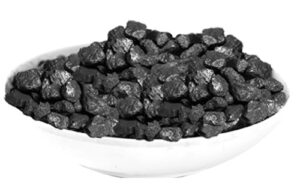Activated carbon is a porous, processed version of carbon that has a wide range of applications, particularly for adsorption and chemical reaction needs in water and gas purification. Because activated carbon particles are porous, they have enormous surface surfaces that are tucked into the pores and tunnels that cover their whole surface. These spaces can also be filled with other materials for other purposes. In water purification, for example, silver is mixed into the carbon pores to filter contaminants such as mercury and organic arsenic from water for domestic drinking purposes. Carbon can be obtained in large quantities for a variety of applications because it is produced from charcoal using a relatively inexpensive and simple series of activation processes
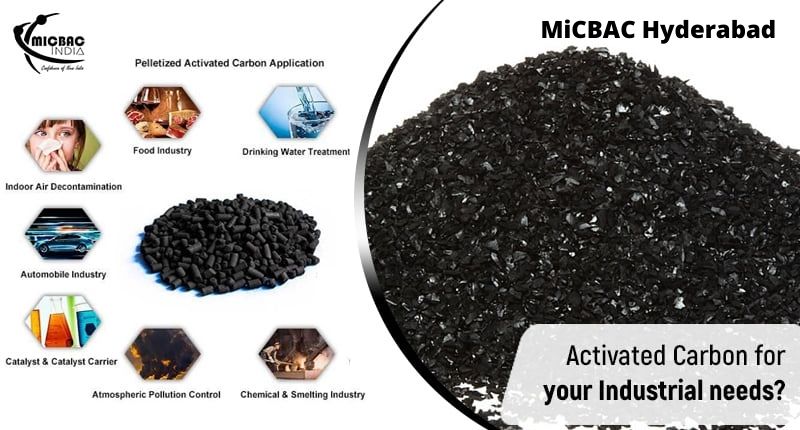
Process of Making Activated Carbon
There are two methods for producing activated carbon, or activating carbon. Carbonization is the process of extracting pure carbon from a carbonaceous source, which can be peat, coal, or any organic carbonaceous substance, using pyrolysis, a heating procedure. Following carbonization, the material should be oxidized, or treated with oxygen, either through CO2 or steam openness or through a corrosive base synthetic treatment.
Carbonization
Carbonization is the process of heating a carbon-rich material to pure carbon. This heating method, known as pyrolysis, is derived from an ancient charcoal-making technique. Because the result must be extra-porous for activated carbon purposes, the very dense carbonaceous material is used in the beginning. Carbon-rich material is cooked at extreme temperatures exceeding 2000 degrees Celsius in a small (relative to the amount of material) furnace. What is left is usually 20-30% of the original weight, and it is mostly carbon with a trace of inorganic ash. This is very similar to “coking,” which is a method of producing coke from charcoal, which is a type of carbon-based fuel.
Once the porous form of carbon is created, it must be oxidized before it can be used as an adsorbent. This can happen in one of two ways: gas treatment or chemical treatment.
Gas Treatment
Carbon can be activated directly by heating in a chamber while gas is pumped in. This exposes it to oxygen, allowing it to oxidize. When activated carbon is oxidized, it becomes susceptible to adsorption, the chemical surface bonding process—exactly what makes activated carbon so effective at filtering waste and toxic chemicals out of liquids and gases. For actual gas treatment, the carbonization pyrolysis process should happen in an idle climate at 600 degrees Celsius to 900 degrees Celsius.
Chemical Treatment
The process in chemical treatment differs slightly from the process in gas activation of carbon. For one thing, carbonization and chemical activation happen at the same time. The material is immersed in an acid, base, or another chemical bath. The bath is then heated to temperatures ranging from 450 degree Celsius to 900 degrees Celsius, which is far less than the heat necessary for gas activation. Carbonization and carbonaceous material activation occur at a significantly quicker pace than gas activation.
After Treatment Activated Carbon
Following oxidization, activated carbons can be processed for a wide range of applications, each with its own set of distinct properties. Granular actuated carbon, for instance, is a sand-like item with bigger grains than powdered enacted carbon, and they serve various capacities.
MICBAC INDIA is a well-known Activated Carbon Plant Manufacturers in India, offering high-quality products at an affordable price. Our machinery is built with cutting-edge technology. dedicated to providing our valued customers with the best-activated carbon making machine manufacturers in India. We are a reputable manufacturing company with a track record of success. Our machinery lowers costs and risks while enabling manufacturing.
Contact Us –
MICBAC INDIA
S.No.-15 with H.no -5-9 to 11
Pocharam, Towards royal kuteer villas, secunderabad, Hyderabad
Pin – 500088
Call – 9937102349

